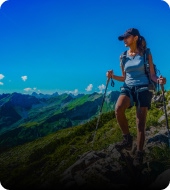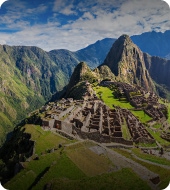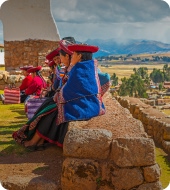
How to Acclimate to Altitude in Peru
Written by:Valencia Travel
Last Update: 2025-06-26
If you plan to travel to Peru, you will experience an incredibly diverse range of landscapes and habitats to participate in all adventurous and cultural activities. One of the ultimate experiences to be enjoyed in Peru is the incredible Inca trail to the ancient Inca Citadel of Machu Picchu, with a high point of 4200 meters above sea level, close to the city of Cusco. Trekking the Inca Trail can be a phenomenal experience for even the most worldly-wise trekker, as can many other trekking routes in the region. However, acclimatization to the altitude is just as important as not forgetting your walking boots. This is one crucial health factor that can’t be cured just by taking a few tablets. Here are some top tips to help you avoid suffering from high altitude when traveling in Peru.
Rainbow Mountain is over 5000 meters High!
Take it Easy
On arrival at a high elevation, there should be no rushing around. The best thing to do is take it easy for the first 24 hours; the remarkable Inca sites will still be there the next day! The same can definitely be said for the Andes and if you have made plans to trek at high altitude in Peru, then plan your ascent over days rather than just heading off into the mountains after leaving your bags at your hotel.
Strenuous Trek at Elevation
Relax
There are plenty of amazing things to do in the city of Cusco, and if you can allow yourself as much time as possible to relax and take things easy, you will be in much better shape for when you start to take things to a higher level. Coffee shops, reading material, and getting to know the area, are all excellent ways to relax in Peru, and as there are some impressive examples of Inca architecture to be visited before you set off on your hike and it is worth taking a look around Cusco as part of your acclimatization to high altitude in Peru.
Spa Treatment at The Hotel
Pack Light
Make sure you only take only the absolute necessities on the trek. Carrying an overweight backpack will slow you down and over-exert you in areas with less oxygen at higher elevations and rugged terrains that you may face.
Pack Light
Eat Well
This refers to eating the correct way and the right meals, not eating everything in sight! Salads, sandwiches, and plenty of water are excellent for preparing your body for altitude issues. Don´t forget, your digestive system slows down at high altitudes, so smaller, more frequent meals are the way to go instead of massive plates of food.
Delicious Creamy Pumpkin Soup, Cusco
Avoid Alcohol
Although all that sitting around can often lead to the more sociable side of life in Peru, it is worth avoiding alcohol until your body is acclimatized to the altitude. Feeling nauseous, dizzy, and suffering severe headaches can take their toll even without a few drinks, and when altitude is combined with alcohol, the effects can be seriously nasty. Save the pisco sours until after the trek!
Post Trek Pisco Sours
The Magical Coca Leaf
For centuries, the humble coca leaf has been used for medicinal and ceremonial purposes in the Andes, which helps to combat altitude symptoms, is a diuretic, and is downright tasty! Whether you make a herbal brew or chew them directly, this incredible natural remedy will immediately help with the headaches and other side effects of high altitude. The porters on the Inca Trail swear by them (take some to give to the porters as a gift…and they will be eternally grateful!) for the extra energy boost, as will you when climbing Dead woman´s Pass!
Coca Tea
Time
Allow adequate time to acclimatize at high altitudes for a better trekking experience. Time is a great healer, as they say, and it certainly is when it comes to adequate acclimatization. Allow 2 to 3 days of acclimatization before considering a trek in The Andes. Your body will thank you for it and have a much better trekking experience if you feel at your best. Find out more about trekking in The Andes with Valencia Travel Cusco here.
 Aventure
Aventure
 Cultural
Cultural
 Gastronomy
Gastronomy
 Wellness
Wellness
 Local Living
Local Living
 Luxury
Luxury















